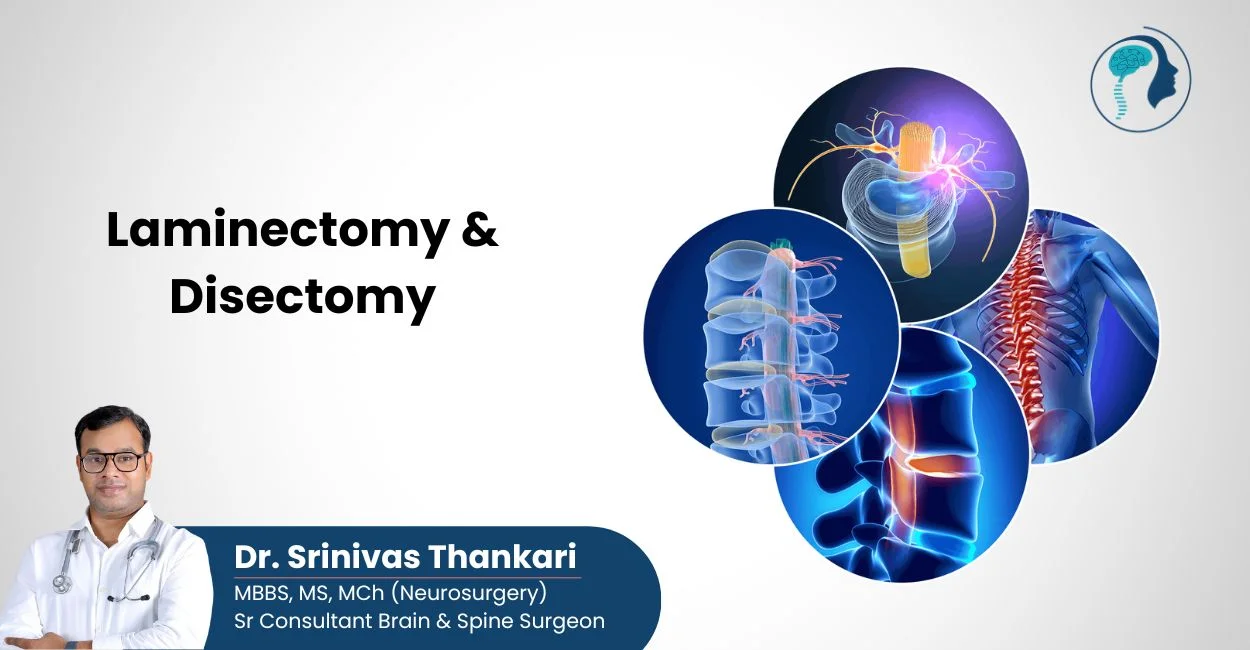
Laminectomy & Discectomy by Expert Brain Surgeon | Spine Surgery in Hyderabad
Laminectomy and discectomy are surgical procedures aimed at relieving pressure on the spinal cord or nerves caused by conditions such as herniated discs, spinal stenosis, or other spinal disorders. These procedures are typically recommended for patients experiencing chronic pain, numbness, or weakness due to nerve compression.
Together, laminectomy and discectomy can provide significant relief and restore functionality by removing the structures that are compressing the nerves or spinal cord.
Indications for Laminectomy & Discectomy:
These procedures may be necessary for various conditions, including:
Herniated Discs: Bulging discs that press on spinal nerves, leading to pain and discomfort.
Spinal Stenosis: Narrowing of the spinal canal, which can compress the spinal cord and nerves.
Degenerative Disc Disease: Wear and tear on the discs that can cause pain and instability in the spine.
Spondylolisthesis: A condition where one vertebra slips forward over another, often leading to nerve compression.
Spinal Tumors or Injuries: Growths or trauma that may necessitate the removal of bone or tissue to relieve pressure.
Benefits:
Dr. Srinivas Thankari, a leading brain and spine surgeon in Uppal, Hyderabad, performs laminectomy and discectomy to:
Alleviate chronic pain and discomfort caused by nerve compression
Improve mobility and restore nerve function
Minimize the risk of further spinal degeneration
Enhance overall quality of life for patients
Procedure Overview:
Laminectomy and discectomy typically involve the following steps:
Preparation: A thorough evaluation, including imaging studies, to determine the best surgical approach.
Surgical Technique:
Laminectomy:Involves the removal of the lamina (the back part of the vertebra) to create more space for the spinal cord and nerves.
Discectomy: Involves the removal of the herniated part of the disc that is pressing on the spinal nerves.
Recovery:A post-operative rehabilitation plan is implemented to support healing and restore spinal function.
Diagnosis:Dr. Srinivas utilizes advanced diagnostic tools and techniques to evaluate spinal health, including:
MRI and CT Scans: Imaging studies that provide detailed views of the spine and identify issues like herniated discs or stenosis.
X-rays:Used to assess spinal alignment and detect any abnormalities.
Physical Examination:A comprehensive assessment of symptoms to determine the necessity of surgery.
Post-Operative Care:
After laminectomy and discectomy, patients receive tailored care, which may include:
Pain Management:Strategies to manage discomfort during recovery.
Physical Therapy:Customized rehabilitation programs to restore strength and flexibility.
Follow-Up Appointments:Regular check-ups to monitor healing and ensure optimal recovery.
If you are suffering from chronic back pain or nerve-related symptoms, consult Dr. Srinivas Thankari, a specialist in spinal surgery. With his expertise in laminectomy and discectomy, you can achieve lasting relief and regain a healthy, active lifestyle.

